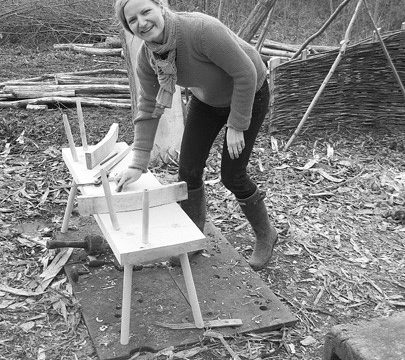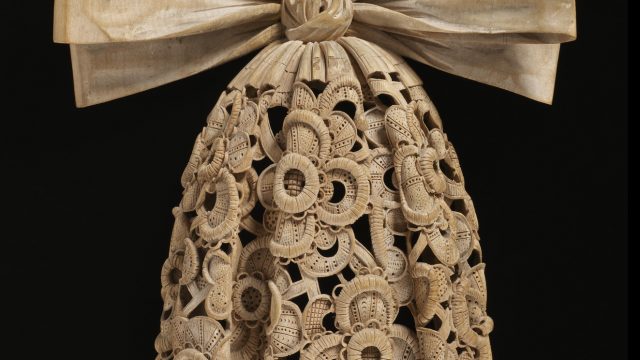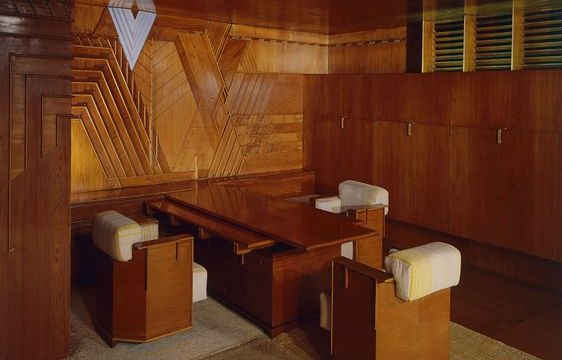This radiogram is a musical pet, or at least that’s how it was described when it appeared in Italy in 1966, the product of the imaginations of the Castiglioni brothers, Achille (1918-2002) and Pier Giacomo (1913-1968). It is the Furniture and Woodwork collections’ first acquisition of 2016.
Brionvega produced many cutting-edge audio-visual products throughout the 1960s, often employing well-known industrial designers to create them. The company, originally named B.P.M., was founded in Milan in 1945 by Giuseppe Brion and Leone Pajetta. Renamed Brionvega in 1960, its association with leading designers began soon after, the ‘Doney’ portable television was produced in 1962 by Marco Zanuso and Richard Sapper. One of the company’s most celebrated products was the TS502 ‘Cube’ radio, by the same designers, first manufactured in 1963 and still made today.
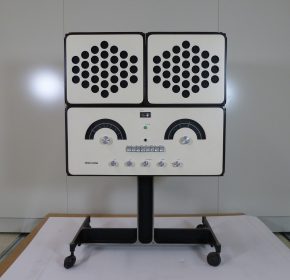
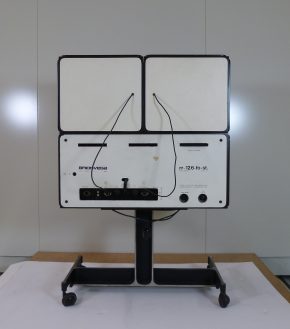
The Brionvega RR126 is an icon of Pop design. It was conceived as an anthropomorphic ‘musical pet’, with speakers for ears and control dials for its face. It could be moved around easily on its castors, allowing it to operate in concert with other informal 1960s furniture (for example, inflatable furniture such as the Blow Chair). It is made from plywood covered with a white plastic laminate. The stand is cast aluminium, painted black except on the leading edges, and its wheels are rubber. The turntable was made by Garrard.
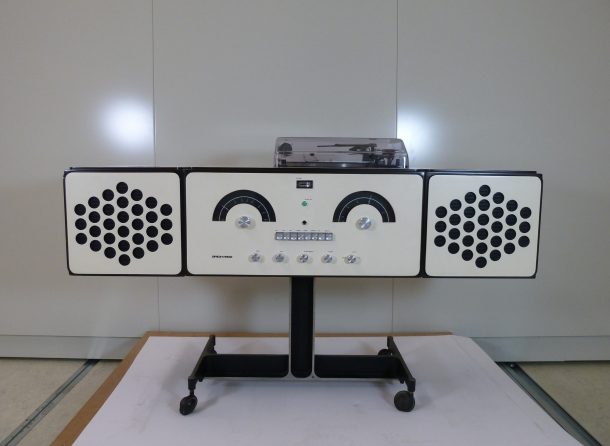
The system’s elements could be arranged in three different ways: speakers on top; speakers hooked to the sides; speakers separated from the main unit. The ability of the RR126 to be rearranged at will provided a fashionable, witty, Pop-inspired piece of furniture, but it also allowed its user a degree of control over the device’s audio output. When the speakers were stacked on top, it meant that only the radio could be used and that stereophonic sound was less effective. In this configuration, the turntable was concealed, fitting into recesses on the underside of the speakers. When they were attached to the sides, the record player was then accessible, and the stereophonic output more obviously effective at greater distance from the unit. The final configuration placed the speakers away from the main body, achieving optimal stereo sound quality. This attention to sound quality is characteristic of the period in which the RR126 was designed. In the mid-1960s, pop music pioneers such as the Beatles and the Beach Boys began to experiment seriously with complex layered song arrangements, which demanded playing on high-quality audio equipment to appreciate the complexity and richness of sound production.
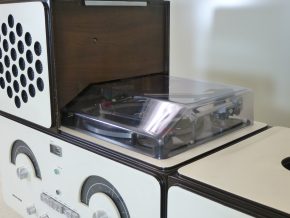
The RR126 was available with several different coloured plastic laminate ‘skins’, including white, black, red, yellow and faux-woodgrain. Its use of brightly coloured plastic laminate as a ‘skin’, as well as its playful, soft form, links it to contemporary Italian furniture designs by the likes of Joe Colombo and Vico Magistretti, who sought to reinterpret and celebrate plastics as materials in their own right.
This example comes with an added interest: it belonged to Sir James Stirling, the renowned architect, who was actually better known as a collector of Regency furniture. He purchased it in 1967 from Zeev Aram, on the King’s Road, Chelsea. Thus, a significant British architect is linked by a brilliantly-designed radiogram to an important (and early) British retailer of modern furniture. This is an exciting new acquisition for us, inspiring too, as the V&A’s Curator of Contemporary Product Design will be able to tell you.
